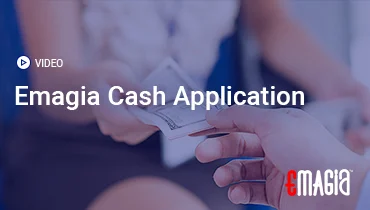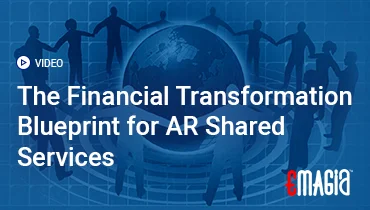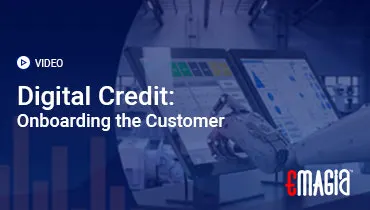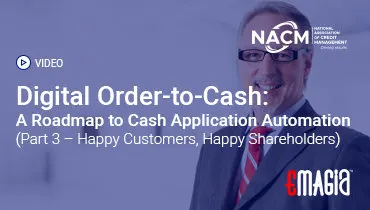In an increasingly digital world, the way businesses handle their financial transactions is undergoing a profound transformation. For decades, paper invoices were the norm, often leading to slow processing, manual errors, and significant operational costs. However, a new standard is rapidly emerging: electronic invoicing.
Electronic invoicing, or e-invoicing, is far more than just sending a PDF via email. It represents a fundamental shift in how invoices are created, transmitted, received, and processed. This digital approach leverages structured data formats to enable seamless, automated exchange between different accounting and enterprise systems, promising unprecedented levels of efficiency and accuracy.
This comprehensive guide will demystify the process, explaining how electronic invoicing works from start to finish. We’ll explore its core components, delve into the myriad benefits it offers businesses, discuss the various types and standards, and address the common challenges of implementation. Finally, we’ll look at the exciting future trends shaping digital billing and how modern solutions are empowering companies to thrive in this new era of financial operations.
Understanding the Fundamentals: What is Electronic Invoicing?
At its heart, electronic invoicing is the exchange of invoice data in a structured, machine-readable format directly between the sender’s and receiver’s financial systems. This key characteristic sets it apart from simply emailing a PDF or scanning a paper invoice.
Defining Digital Billing: More Than Just PDFs
Many businesses mistakenly believe that sending a PDF invoice via email qualifies as electronic invoicing. While a PDF is a digital document, it is generally an “unstructured” format. This means the data within it cannot be automatically read and processed by accounting systems without human intervention or optical character recognition (OCR) software, which can still be prone to errors.
True e-invoicing involves data that is structured, meaning it’s organized in a way that computers can easily understand and process without manual data entry. This allows for automated validation, matching, and posting into the recipient’s accounts payable system, significantly streamlining the entire procure-to-pay and order-to-cash cycles.
Key Characteristics of Structured Electronic Invoices
A genuine electronic invoice possesses several defining characteristics:
- Structured Data: The invoice information (e.g., supplier details, invoice number, line items, amounts, tax data) is encoded in a standardized, machine-readable format (like XML or EDI) rather than being free-form text or an image.
- Automated Processing: Because the data is structured, it can be automatically extracted, validated, and entered into the recipient’s accounting or ERP system, eliminating manual data entry and reducing errors.
- Direct System-to-System Exchange: The invoice is transmitted directly from the sender’s system to the receiver’s system, often via an e-invoicing network or service provider, ensuring secure and efficient delivery.
- Compliance and Auditability: Electronic invoices are designed to meet specific legal and tax compliance requirements, often including digital signatures and unique identifiers, providing a robust audit trail.
These characteristics are fundamental to understanding how electronic invoicing works and why it delivers such profound benefits.
The Digital Flow: How Electronic Invoicing Works Step-by-Step
The process of electronic invoicing involves a series of interconnected steps that ensure data integrity, security, and seamless exchange between trading partners. It transforms the traditional paper-based workflow into a highly automated digital journey.
From Sender to Receiver: The E-Invoicing Process Explained
Let’s break down the typical flow of a structured electronic invoice:
- Invoice Creation at the Sender’s End: The process begins when the supplier generates an invoice within their existing accounting, ERP (Enterprise Resource Planning), or billing system. All necessary details, such as line items, quantities, prices, and tax information, are captured.
- Data Transformation to Structured Format: Instead of printing or creating a PDF, the system converts the invoice data into a predefined structured electronic format (e.g., UBL XML, Factur-X, or a country-specific standard). This conversion is often handled by an e-invoicing solution or a service provider.
- Secure Transmission: The structured invoice data is then transmitted to the buyer. This transmission can occur in several ways:
- Direct Exchange (EDI): For large trading partners with established connections, the data might be sent directly from one system to another using Electronic Data Interchange (EDI).
- Through an E-Invoicing Network/Service Provider: This is the most common method. The sender’s e-invoicing solution sends the invoice to their service provider, who then routes it through a network (like Peppol) to the receiver’s service provider, and finally to the receiver’s system. This acts as a digital post office.
- Via a Web Portal: In some cases, the sender might upload the invoice to a buyer’s dedicated web portal, or the buyer might retrieve it from the supplier’s portal.
- Receipt and Validation at the Receiver’s End: The receiver’s system or e-invoicing service provider receives the structured invoice data. Automated validation checks are performed to ensure the invoice meets all required formats, business rules, and regulatory standards. This step often includes matching against purchase orders or goods receipts.
- Integration into Receiver’s System: Once validated, the invoice data is automatically imported into the receiver’s accounts payable (AP) system or ERP. This eliminates manual data entry, reducing errors and accelerating processing.
- Automated Approval and Payment Processing: The system can then route the invoice for automated approval workflows. Once approved, the payment process can be initiated, often leveraging electronic payment methods, leading to faster settlements.
- Archiving: Both sender and receiver securely store the electronic invoice in a compliant digital archive, ensuring easy retrieval for audits and record-keeping.
Key Components of an Electronic Invoicing System
To facilitate this digital flow, several key components work in tandem within an electronic invoicing ecosystem:
- Sender’s Accounting/ERP System: The source where the invoice data originates.
- E-Invoicing Service Provider/Platform: A third-party service that handles the conversion of invoice data into structured formats, ensures secure transmission, and facilitates interoperability with various networks and recipient systems.
- Data Formats and Standards: Predefined XML-based formats (e.g., UBL – Universal Business Language, Factur-X, ZUGFeRD) or older EDIFACT standards that ensure machine readability and consistency.
- Secure Transmission Channels: Protocols and networks (like Peppol) that guarantee the secure and reliable exchange of sensitive invoice data.
- Receiver’s Accounting/ERP System: The destination system where the invoice data is automatically processed and reconciled.
- Digital Archiving Solution: Secure storage for electronic invoices to meet legal retention requirements and facilitate audits.
These components collectively define how electronic invoicing works to create a seamless, end-to-end digital billing process.
Beyond Paper: The Transformative Benefits of Electronic Invoicing
The adoption of electronic invoicing offers a compelling array of advantages that extend far beyond simply going paperless. These benefits impact operational efficiency, financial health, compliance, and even business relationships.
Achieving Operational Efficiency and Cost Savings
One of the most immediate and significant benefits of e-invoicing is the dramatic improvement in operational efficiency and substantial cost reductions. By eliminating manual steps, businesses can reallocate resources to more strategic tasks.
- Reduced Manual Effort: Automated data entry, validation, and matching mean less time spent on tedious, repetitive tasks. This frees up accounts payable (AP) and accounts receivable (AR) staff to focus on exceptions, analysis, and strategic initiatives.
- Lower Operational Costs: E-invoicing significantly cuts down on expenses associated with printing, paper, postage, physical storage, and manual labor. Studies often show cost savings of 60-80% per invoice compared to traditional methods.
- Faster Processing Cycles: The digital nature of e-invoicing allows for invoices to be sent, received, and processed much more quickly, reducing bottlenecks and accelerating the entire billing cycle.
Enhancing Accuracy and Reducing Errors
Manual data entry is inherently prone to human error, leading to discrepancies, disputes, and delays. Electronic invoicing inherently addresses this challenge.
- Automated Data Validation: E-invoicing systems automatically validate invoice data against predefined rules and existing purchase orders, ensuring accuracy from the outset.
- Minimizing Human Error: By removing the need for manual keying, the risk of typos, incorrect amounts, or misrouted invoices is drastically reduced.
- Improved Data Quality: The structured nature of e-invoices ensures consistent and high-quality data, which is crucial for accurate financial reporting, forecasting, and compliance.
Boosting Cash Flow and Accelerating Payments
Faster invoice processing directly translates to improved cash flow, a critical metric for any business’s financial health.
- Faster Invoice Delivery and Processing: Electronic invoices are delivered instantly and processed automatically, eliminating delays associated with mail delivery or manual handling. This means invoices are ready for payment much sooner.
- Reduced Disputes: Higher accuracy and automated matching lead to fewer invoice disputes, allowing payments to proceed smoothly without interruptions.
- Improved Days Sales Outstanding (DSO): By accelerating the entire invoicing and payment cycle, e-invoicing helps businesses reduce their DSO, meaning they collect payments faster and improve their working capital. This can also enable businesses to take advantage of early payment discounts from suppliers.
Ensuring Regulatory Compliance and Audit Trails
Governments worldwide are increasingly mandating electronic invoicing for tax compliance and fraud prevention. E-invoicing solutions are built to meet these evolving requirements.
- Meeting E-Invoicing Mandates: Many e-invoicing platforms are pre-configured to comply with country-specific regulations (e.g., Peppol in Europe, GST e-invoicing in India, FacturaE in Spain), ensuring businesses meet their legal obligations.
- Secure Archiving and Non-Repudiation: Electronic invoices are digitally signed and securely archived, providing an immutable record and strong evidence of transaction authenticity, crucial for non-repudiation.
- Simplified Audits: All transaction details are readily available in a structured, digital format, making audits faster, more efficient, and less burdensome.
Strengthening Supplier-Buyer Relationships
Beyond the operational and financial gains, electronic invoicing can foster more robust and collaborative relationships between trading partners.
- Increased Transparency: Both parties have real-time visibility into invoice status, reducing uncertainty and the need for constant inquiries.
- Fewer Disputes: The accuracy and automated validation inherent in e-invoicing lead to fewer discrepancies and disputes, building trust and smoother interactions.
- Improved Communication: Automated notifications and clear digital records streamline communication, allowing partners to resolve issues quickly and efficiently.
Navigating the Landscape: Types and Standards of Electronic Invoicing
The world of electronic invoicing is diverse, with various methods and standardized formats designed to facilitate the digital exchange of billing information. Understanding these different approaches is key to appreciating how electronic invoicing works across different business contexts.
Direct Exchange (EDI – Electronic Data Interchange)
Electronic Data Interchange (EDI) is one of the oldest forms of electronic document exchange, including invoices. It involves a direct, point-to-point connection between two trading partners’ systems. EDI is highly structured and requires significant upfront setup and mapping for each new partner.
- Characteristics: Highly standardized messages, often transmitted over private networks or secure internet protocols. Requires custom programming for each unique trading relationship.
- Pros: Extremely efficient for high-volume, repetitive transactions between established partners.
- Cons: Can be complex and costly to set up, especially for small and medium-sized enterprises (SMEs) with many trading partners, as each new connection requires specific configuration.
E-Invoicing Networks/Platforms
E-invoicing networks or service providers act as intermediaries, connecting multiple businesses through a hub-and-spoke model. These networks simplify the process by allowing businesses to send and receive e-invoices through a single connection to their chosen provider, regardless of the format or system used by their trading partners.
- Characteristics: Interoperability is a key feature, allowing different systems and formats to communicate. Examples include the Peppol network, which provides a standardized framework for cross-border e-invoicing.
- Pros: Reduces complexity for businesses by abstracting away the need for individual connections and format conversions for each partner. Facilitates broader adoption and reach.
- Cons: Relies on the service provider’s infrastructure and pricing models.
Web Portals
Web portals offer a simpler, browser-based approach to electronic invoicing, often used by larger buyers to receive invoices from a diverse supplier base, or by suppliers to present invoices to their customers.
- Supplier Portals: Suppliers log into a buyer’s dedicated portal to manually key in or upload their invoice data. The data is then captured by the buyer’s system.
- Buyer Portals: Buyers can log into a supplier’s portal to view, download, or approve invoices.
- Pros: Easy to adopt, requiring minimal technical setup. Good for businesses with low invoice volumes or a diverse range of trading partners.
- Cons: Less automated than direct EDI or network solutions, often still requiring some manual intervention for data entry or retrieval.
Key E-Invoicing Standards and Formats
The backbone of electronic invoicing is the use of standardized, structured data formats that ensure machine readability and interoperability. These formats dictate how electronic invoicing works at a technical level:
- XML (eXtensible Markup Language): A widely used, flexible language for encoding documents in a format that is both human-readable and machine-readable. Many e-invoicing standards are based on XML, including:
- UBL (Universal Business Language): An international standard for electronic business documents, including invoices.
- Factur-X / ZUGFeRD: Hybrid formats popular in Europe (especially France and Germany) that combine a human-readable PDF with an embedded XML file containing structured data.
- Country-Specific XML Formats: Many countries have their own mandated XML-based e-invoicing formats for tax compliance (e.g., FatturaPA in Italy, E-Invoice in India).
- EDIFACT (Electronic Data Interchange For Administration, Commerce and Transport): A UN/CEFACT standard for EDI messages, widely used in various industries for structured data exchange.
- JSON (JavaScript Object Notation): A lightweight data-interchange format, increasingly popular for web applications and APIs due to its simplicity. It’s newer than XML but gaining traction in some e-invoicing contexts.
The shift to these structured formats is crucial because it enables the automation that drives the benefits of e-invoicing.
Overcoming Hurdles: Challenges in Implementing Electronic Invoicing
While the advantages of electronic invoicing are clear, the transition from traditional methods to a fully digital process can come with its own set of challenges. Being aware of these potential hurdles allows businesses to plan effectively and ensure a smoother implementation.
- Initial Setup Complexity and Cost: Implementing a robust e-invoicing solution, especially for larger organizations, can involve significant upfront investment in software, infrastructure, and configuration. Integrating with existing legacy systems may also require considerable technical effort.
- Integration with Existing Systems: Many businesses operate with various disparate systems (ERP, accounting, CRM). Ensuring seamless, bidirectional data flow between the e-invoicing solution and these existing systems can be a complex technical challenge, requiring careful planning and potentially custom development.
- Supplier/Buyer Onboarding: Getting all trading partners (both suppliers and buyers) to adopt electronic invoicing can be a significant hurdle. It requires clear communication, education, and sometimes incentives to encourage participation and ensure everyone is on the same page regarding formats and processes.
- Change Management and Training: Transitioning from paper-based or manual processes to an automated e-invoicing system requires internal change management. Employees need to be trained on new workflows, software interfaces, and best practices, which can meet resistance if not handled proactively.
- Ensuring Global Compliance: For businesses operating internationally, navigating the diverse and evolving landscape of country-specific e-invoicing mandates, tax regulations, and data privacy laws can be incredibly complex. A solution must be flexible enough to handle multiple compliance requirements.
- Data Quality and Standardization: The success of automated processing hinges on high-quality, standardized data. Inconsistent data entry or poor data hygiene in source systems can lead to errors in e-invoicing, undermining its benefits.
Despite these challenges, the long-term benefits of efficiency, cost savings, and compliance typically far outweigh the initial implementation hurdles, making the investment worthwhile for businesses committed to digital transformation.
The Horizon: Future Trends in Electronic Invoicing
The evolution of electronic invoicing is far from over. As technology continues to advance, e-invoicing systems are becoming even more intelligent, secure, and integrated, promising further enhancements to financial operations.
AI and Machine Learning in E-Invoicing Automation
Artificial Intelligence (AI) and Machine Learning (ML) are set to revolutionize e-invoicing by adding layers of intelligence and predictive capabilities to the process:
- Intelligent Data Extraction: AI-powered OCR can accurately extract data from even unstructured documents (like scanned PDFs) and convert them into structured formats, bridging the gap between traditional and true e-invoicing.
- Automated Matching and Reconciliation: ML algorithms can learn from historical patterns to automatically match invoices with purchase orders and goods receipts, significantly reducing manual reconciliation efforts and accelerating approvals.
- Fraud Detection: AI can analyze invoice patterns and anomalies to detect potential fraudulent invoices, enhancing security and preventing financial losses.
- Predictive Analytics: ML can forecast cash flow more accurately by predicting invoice payment dates based on historical behavior, improving financial planning.
Blockchain for Enhanced Security and Trust
Blockchain technology, with its distributed and immutable ledger, holds significant promise for enhancing the security, transparency, and trust in electronic invoicing:
- Immutable Records: Each e-invoice transaction recorded on a blockchain creates an unchangeable, verifiable record, significantly reducing the risk of fraud or manipulation.
- Increased Transparency and Traceability: All parties in the transaction (sender, receiver, tax authorities) can view the same, consistent record, enhancing transparency and traceability throughout the invoice lifecycle.
- Smart Contracts for Automated Payments: Blockchain-based smart contracts could enable automated payments once predefined conditions (e.g., invoice approval, goods receipt) are met, further accelerating the procure-to-pay process.
Global Mandates and Interoperability
The trend towards government-mandated electronic invoicing is accelerating worldwide, driving the need for greater interoperability between different systems and networks.
- Increasing Government-Led Mandates: More countries are making e-invoicing mandatory for B2B and B2G transactions to improve tax compliance, reduce the VAT gap, and boost digital economies.
- Push for Seamless Cross-Border E-Invoicing: Initiatives like Peppol aim to create a truly global, interoperable network for e-invoicing, allowing businesses to exchange documents seamlessly across borders, regardless of their location or chosen service provider.
These trends indicate a future where electronic invoicing is not just a best practice, but a universal standard, powered by advanced technologies for even greater efficiency and security.
Emagia: Empowering Your E-Invoicing Transformation
Navigating the complexities of electronic invoicing, especially with evolving global mandates and the integration of advanced technologies, requires a robust and intelligent solution. Emagia, a leader in AI-powered Order-to-Cash (O2C) automation, provides a comprehensive platform designed to streamline and optimize your entire invoicing process.
Emagia’s solution goes beyond basic e-invoicing capabilities. It leverages artificial intelligence and machine learning to automate the generation, delivery, and processing of electronic invoices, ensuring high accuracy and compliance. The platform integrates seamlessly with your existing ERP and accounting systems, eliminating manual data entry and providing real-time visibility into your accounts receivable. This means faster invoice delivery, quicker approvals, and accelerated cash collection.
With Emagia, businesses can benefit from intelligent invoice matching, automated dispute resolution workflows, and predictive analytics that forecast payment behaviors. This not only reduces operational costs and errors but also significantly improves Days Sales Outstanding (DSO) and strengthens customer relationships through efficient, transparent billing. Emagia empowers your finance teams to move from reactive processing to proactive financial management, ensuring your e-invoicing strategy is future-proof and drives tangible business value.
FAQ: Frequently Asked Questions about Electronic Invoicing
Is an emailed PDF considered an electronic invoice?
No, typically an emailed PDF is not considered a true electronic invoice. While it’s a digital document, its data is usually unstructured, meaning it cannot be automatically processed by accounting systems without manual data entry or OCR. A true electronic invoice contains structured data that systems can read directly.
What are the main benefits of using electronic invoicing?
The main benefits include significant cost savings (from reduced paper, printing, and postage), increased operational efficiency through automation, improved data accuracy, faster invoice processing and payment cycles, better cash flow management, enhanced regulatory compliance, and stronger relationships with trading partners due to increased transparency.
Is electronic invoicing mandatory for businesses?
The mandatory nature of electronic invoicing varies by country and sometimes by business size or sector. Many governments worldwide are increasingly implementing mandates for B2B (business-to-business) and B2G (business-to-government) transactions to improve tax compliance and reduce fraud. It’s important to check the regulations in your specific operating regions.
What is Peppol in the context of e-invoicing?
Peppol (Pan-European Public Procurement Online) is an international framework that provides a set of technical specifications to facilitate the secure and interoperable exchange of electronic business documents, including e-invoices, across different systems and countries. It acts as a network that connects various e-invoicing service providers, simplifying cross-border digital transactions.
How does electronic invoicing improve cash flow?
Electronic invoicing improves cash flow by accelerating the entire billing cycle. Invoices are delivered instantly, processed automatically, and errors are reduced, leading to faster approvals and payments. This reduces Days Sales Outstanding (DSO), meaning businesses receive their money sooner and have better control over their working capital.
What are the security aspects of electronic invoicing?
Security in electronic invoicing is crucial. Reputable e-invoicing solutions employ features such as encryption for data transmission, digital signatures to verify authenticity and integrity, secure archiving for compliance, and robust access controls. This makes e-invoicing generally more secure than paper-based methods, which are susceptible to loss, damage, or unauthorized access.
Conclusion: Mastering Digital Transactions with a Modern E-Invoicing Strategy
In conclusion, understanding how electronic invoicing works is no longer just an advantage; it’s a fundamental requirement for businesses aiming to thrive in the modern economy. The shift from outdated paper-based processes to a streamlined, automated, and intelligent digital billing system offers transformative benefits across the entire financial landscape.
From significant cost reductions and enhanced operational efficiency to improved cash flow, greater accuracy, and robust regulatory compliance, e-invoicing empowers organizations to operate with unprecedented agility and control. As AI, blockchain, and global mandates continue to shape the future of digital transactions, adopting a comprehensive e-invoicing strategy is paramount. It’s an investment that not only optimizes your current financial operations but also positions your business for sustainable growth and resilience in a rapidly evolving digital world.



